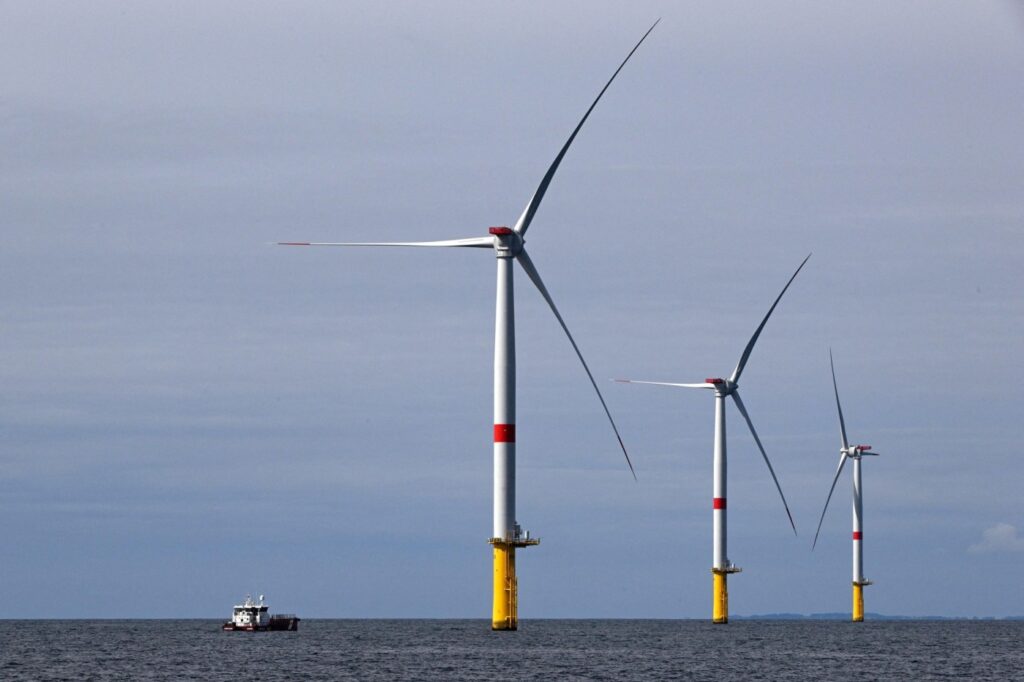
The winds in California get a bad name when they worsen devastating fires across the state but wind also is a clean form of energy the state is looking to harness further.
The first big wind farms in the U.S. were built in California, then the industry boomed nationwide. There are now more than 60,000 turbines in the U.S., with the biggest clusters in the Midwest.
California has some of the loftiest goals for renewable energy in the country. California, under state law, must run on 60% renewable energy by 2030, ramping up to 100% by 2045.
Just over half of power generated for Californians in 2022 came from solar, wind, other renewable and nuclear power, while 36% came from natural gas plants.
Winds of change
Offshore wind farms have increased in popularity around the world because they generate power night and day.
In July, the California Energy Commission unanimously approved a sweeping plan to develop massive floating offshore wind farms in Humboldt County and Morro Bay.
Five energy companies are now assessing sites, which is expected to take five years. That will be followed by about two years of design, construction and environmental and technical reviews.
Part of the plan is to have offshore wind turbines 20 miles offshore, in 4,000 feet of water, to generate 25 gigawatts by 2045 and send it ashore.
The 25 gigawatts is enough to power 25 million homes.
Estimated costs for offshore wind farms are difficult to determine. A 3.5 gigawatt wind farm with at least 900 turbines in New Mexico reached $11 billion in funding. The construction began in 2023 and is projected to start in 2026. The New Mexico farm is expected to send power to Arizona and California.
Blackridge Research and Consulting, an environmental energy research company, calculates that an offshore wind farm with a capacity of 12 megawatts would cost about $400 million to manufacture and install. Using that calculation, a 3.5 gigawatt farm could be more than $116 billion.
Wind, nuclear and solar compared
How many wind turbines would it take to equal the energy output of one typical nuclear reactor? According to a Q & A of MIT climate scientists, it would take nearly 800 of today’s average-sized, land-based wind turbines. That amounts to the same as roughly 8.5 million solar panels.
Downsides
The Department of Energy says some of the cons of wind power are:
Intermittent
Noise and visual pollution
Some adverse environmental impact
Wind power is remote
In terms of land use, a 2018 Department of Energy study found solar energy’s average power density (measured in watts per meter squared) is 10 times higher than wind power.
State ranks
Top 10 states in wind energy generation as of July and percentage of total U.S. wind energy generation
Texas | 9,114 | 32.4%
Oklahoma | 3,031 | 10.8
Kansas | 2,153 | 7.7
Iowa | 2,001 | 7.1
Colorado | 1,219 | 4.3
California | 1,202 | 4.3
Illinois | 1,020 | 3.6
New Mexico | 908 | 3.2
Oregon | 791 | 2.8
North Dakota | 757 | 2.7
Sources: California Energy Commission, Energy and Environmental Economics, American Wind Energy Association, Energy.gov, CalWEA.org, calmatters.org, Blackridge Research and Consulting
